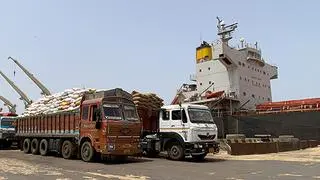With the new CEO having come on board, the Tatas are into a crucial phase of turning around Air India. There are two ‘big’ issues at this point in time, which will lay the foundation for the future.
In one way, the Tatas are fortunate to have time at their favourable disposal as there is no pressure to immediately show-case results. There is no pressure on valuation at this stage and the leadership can focus on building uncompromised capabilities. What are those two ‘big’ issues?
Two issues
First, the leadership’s approach towards senior management choice and the employee retention strategies is crucial. The core capabilities of any organisation are predominantly embedded within its people; especially in acquisitions, carefully nurturing existing skillsets, while in parallel infusing fresh blood is the real challenge. Many acquisitions, break precisely on this point.
Airline specific skill set is niche and is a ‘zero sum’ game, in the short term. India’s airline specific skillset availability is likely to be strained with Air India hiring, Akasa Air commencing operations and Jet Airways considering a re-entry.
One cannot forget the fact that Tatas do not have airline expertise; Vistara and Air Asia are primarily driven by its joint venture partners’ domain expertise. The Tatas need Air India staff more than anything else, as that’s where the core ‘airline operations’ skillsets are placed.
Air India is reported to employ around 9,000 permanent staff and the voluntary retirement scheme that is rolled out, much earlier than originally planned, seems will end up with 4,500 of them accepting to leave. Many more are retiring in the next few years. In parallel Air India has conducted walk-in interviews for cabin crew in various metros.
For some of the very crucial senior management positions Tatas are reported to have narrowed down on executives without hard-core airline experience. With such reported developments, Air India seems to be drifting towards a larger mix of newer workforce with non-aviation background, which is concerning.
Merging talent
While aircraft, technology and processes can be acquired by anybody, people and skillsets built over years, are fundamental to competitive advantage. Air India for sure has in the past had one of the best talent in the industry; such talent needs to be filtered out and retained. If such skill sets and talent are not preserved in the new entity, the very purpose of the acquisition is defeated.
Acquisitions and mergers in general create a lot of uncertainties to the staff with rumours in abundance floating around. There is a general tendency for employees to get polarised and grouped which again could be aggravated by opportunistic power centres. If these are not resolved, the very ‘going concern’ of the organisation could be impacted.
Incoming Air India employees should never get a feeling, that they are less important and are being marginalised; they must be solidly integrated within the new airline. Voices down the line will never reach the ears of the CEO unless he finds ways to gets to them. When US Airways acquired American Airlines, the CEO of US Airways Doug Parker moved with his family to the headquarters of American Airlines, and demonstrated how much he valued the incoming skill sets.
Demonstrating transparency, openness and readiness to listen by the leadership is crucial and communication needs to be seamless to manage the expectations of all such diverse groups in order to preserve the skillsets.
Second, setting out the structure of airline business within the Tata group is critical; for example, should Air India express possibly be merged with Air Asia, should Air India and Vistara operate as separate airlines or should they also be merged? Let me explain as to why this is important.
Fleet acquisition
The choice of aircraft fleet is a crucial decision for any airline and impacts fleet-driven economics and bottom-line. Primarily Boeing and Airbus families have aircraft with varying ranges, suitable for long and short haul routes.
A fleet mix with less diversity in terms of aircraft type, is a major operating cost driver and provides a number of advantages driving costs; low-cost airlines primarily focus on single aircraft type. For example, IndiGo has a predominant Airbus fleet and Southwest has only Boeing.
However, as the network of the airline expands with a mix of international long-haul and domestic short-haul routes, the benefits of single-aircraft type fleet are no more an advantage. Moving to a mix of large and small aircraft types, and within the same, a good mix of Airbus and Boeing families will become crucial.
For Air India, along with its structure, comes the choice of aircraft fleet under each entity. All the entities including Vistara and Air India Express have their own diverse fleet and ‘independent’ fleet expansion plans. Further, reports indicate that Air India could soon place one of the largest orders in the aviation history.
Finalising the overall structure and freezing the optimal fleet for the group as a whole is a crucial decision as large financial commitments on fleet-mix is currently being made.
The leadership team for sure is thinking on these lines; if Tata’s cannot turnaround Air India, who else can!
The writer is Distinguished Professor Strategy & Accounting at the Great Lakes Institute of Management Chennai








Comments
Comments have to be in English, and in full sentences. They cannot be abusive or personal. Please abide by our community guidelines for posting your comments.
We have migrated to a new commenting platform. If you are already a registered user of TheHindu Businessline and logged in, you may continue to engage with our articles. If you do not have an account please register and login to post comments. Users can access their older comments by logging into their accounts on Vuukle.